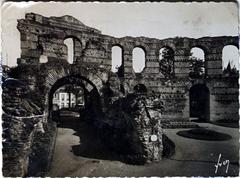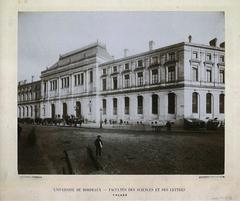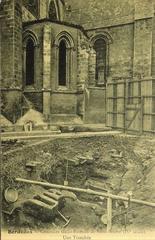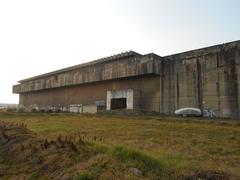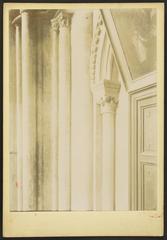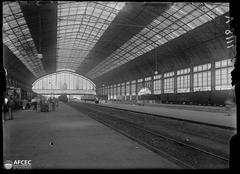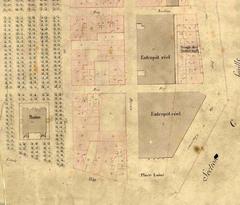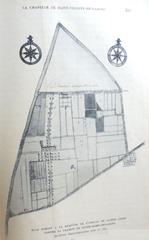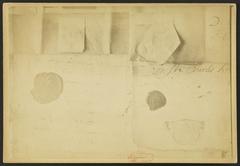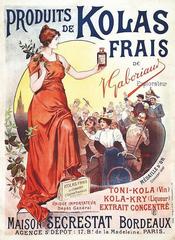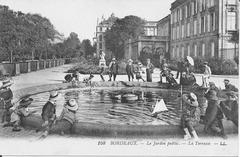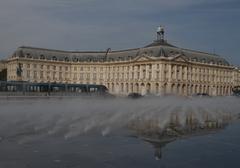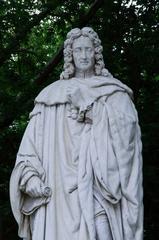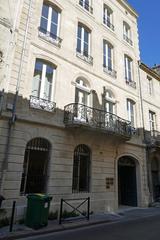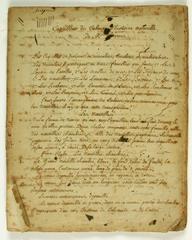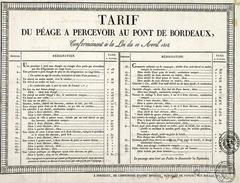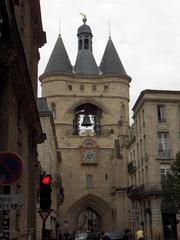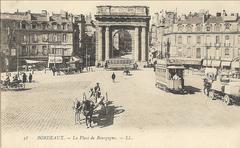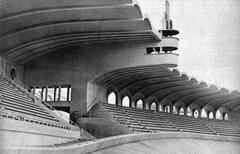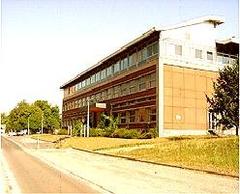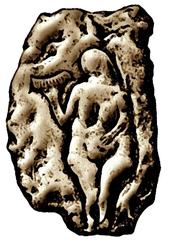Place de la Bourse in Bordeaux: Visiting Hours, Tickets, and Historical Insights
Date: 17/07/2024
Introduction
Place de la Bourse, a striking square in Bordeaux, France, is an architectural and cultural jewel that captivates visitors with its historical grandeur and modern allure. This iconic landmark embodies the rich history of Bordeaux, tracing its roots from a Roman settlement to a hub of global trade. Designed by the esteemed architect Ange-Jacques Gabriel in the 18th century, Place de la Bourse stands as a magnificent example of French Classical and Baroque architecture. The square’s evolution over centuries, from its origins under Roman influence to its current status as a UNESCO World Heritage site, showcases Bordeaux’s transformation and enduring significance (Bordeaux Tourism). Visitors are drawn to this site not only for its historical depth but also for its vibrant, modern features, such as the mesmerizing Miroir d’Eau. This comprehensive guide aims to provide an in-depth exploration of Place de la Bourse’s history, architectural splendor, and practical information for visitors, enhancing the experience of those who wish to delve into Bordeaux’s rich heritage.
Table of Contents
- [Historical Background](#historical-backgroundhistorical-background)
- [Roman Roots and Medieval Transformations](#roman-roots-and-medieval-transformationsroman-roots-and-medieval-transformations)
- [A Royal Vision - Birth of a Grand Design](#a-royal-vision---birth-of-a-grand-designa-royal-vision---birth-of-a-grand-design)
- [Gabriel’s Masterpiece - Architectural Triumph and Urban Transformation](#gabriels-masterpiece---architectural-triumph-and-urban-transformationgabriels-masterpiece---architectural-triumph-and-urban-transformation)
- [A Square of Change - Revolution, Empire, and Beyond](#a-square-of-change---revolution-empire-and-beyonda-square-of-change---revolution-empire-and-beyond)
- [A Modern Icon - Place de la Bourse in the 21st Century](#a-modern-icon---place-de-la-bourse-in-the-21st-centurya-modern-icon---place-de-la-bourse-in-the-21st-century)
- [Visiting Place de la Bourse](#visiting-place-de-la-boursevisiting-place-de-la-bourse)
- [Tickets and Visiting Hours](#tickets-and-visiting-hourstickets-and-visiting-hours)
- [Travel Tips and Nearby Attractions](#travel-tips-and-nearby-attractionstravel-tips-and-nearby-attractions)
- [Accessibility](#accessibilityaccessibility)
- [Special Events and Guided Tours](#special-events-and-guided-toursspecial-events-and-guided-tours)
- [Photographic Spots](#photographic-spotsphotographic-spots)
- [Conclusion](#conclusionconclusion)
- [FAQ](#faqfaq)
- [References](#referencesreferences)
Historical Background
Roman Roots and Medieval Transformations
Place de la Bourse, Bordeaux’s majestic square, is not merely a feast for the eyes; it’s a living testament to the city’s rich history, reflecting its evolution from a prosperous Roman settlement to a global center of trade. The history of Place de la Bourse, and indeed Bordeaux itself, can be traced back to the Romans. Around the 1st century BC, they established the city of Burdigala in the region, laying the groundwork for what would become a significant urban center. While the exact location of Place de la Bourse during this period remains unclear, archaeological evidence suggests the presence of Roman structures in the vicinity, highlighting the area’s early significance.
During the Middle Ages, Bordeaux, under English rule for over three centuries, witnessed significant development. The area now occupied by Place de la Bourse, situated near the Garonne River, played a crucial role in the city’s maritime trade. However, it lacked the grandeur it would later achieve, remaining a relatively undeveloped space near the port.
A Royal Vision - Birth of a Grand Design
The transformation of Place de la Bourse began in the 18th century under the reign of King Louis XIV. Driven by a vision to modernize Bordeaux and enhance its prestige, the King commissioned the intendant, Nicolas-François Dupuy, to create a grand royal square. This marked a turning point in the history of the square, signifying a shift from its purely functional past to a symbol of royal power and architectural ambition.
The task of designing this ambitious project fell upon Jacques Gabriel, the King’s architect, renowned for his work on iconic structures like the Place Royale (now Place Vendôme) in Paris. Gabriel envisioned a space that would not only celebrate the monarchy but also provide a harmonious transition between the city and the Garonne River.
Gabriel’s Masterpiece - Architectural Triumph and Urban Transformation
Construction began in 1720 and continued for several decades, finally culminating in 1755. Gabriel’s design for Place de la Bourse was a masterpiece of French classical architecture, characterized by its elegant symmetry, imposing facades, and intricate details. The square was originally named “Place Royale” in honor of King Louis XV, the grandson of Louis XIV. It was conceived as a grand open space, a stark contrast to the cramped and often chaotic medieval city center. This new urban design philosophy, emphasizing spaciousness and grandeur, reflected the changing ideals of the era.
Two magnificent buildings, identical in design but distinct in their purpose, framed the square: the Hôtel des Fermes and the Hôtel de la Bourse. The Hôtel des Fermes, located on the south side, housed the offices responsible for collecting taxes on goods entering the city. Its ornate facade, adorned with sculptures representing the continents of Africa, America, Asia, and Europe, served as a visual reminder of Bordeaux’s far-reaching trade networks. Facing the Hôtel des Fermes, on the north side, stood the Hôtel de la Bourse. This building, as its name suggests, was intended to house the city’s stock exchange. Its equally impressive facade featured sculptures symbolizing trade, abundance, and the Garonne River, further emphasizing the city’s commercial prowess.
A Square of Change - Revolution, Empire, and Beyond
The French Revolution in 1789 brought about a wave of change that swept across France, and Place de la Bourse was not immune to its effects. The square, once a symbol of royal authority, was renamed “Place de la Liberté” (Liberty Square), reflecting the newly established republic’s ideals. Under Napoleon Bonaparte’s rule, the square underwent further transformations. A bronze equestrian statue of Napoleon, a common sight in many French cities during his reign, was erected in the center, replacing a previous fountain. This act symbolized Napoleon’s consolidation of power and his ambition to leave his mark on the urban landscape of France.
The statue, however, proved to be as transient as Napoleon’s reign. Following his downfall, it was removed, and the square underwent several name changes, reflecting the political upheavals of the 19th century. It was briefly known as “Place Royale” again during the Restoration, then “Place de la Bourse” after the July Revolution of 1830, a name that has endured to this day.
A Modern Icon - Place de la Bourse in the 21st Century
Today, Place de la Bourse stands as a UNESCO World Heritage site, a testament to its architectural and historical significance. It remains a vibrant hub of activity, attracting locals and tourists alike. The buildings surrounding the square have witnessed various transformations over the years. The Hôtel de la Bourse now houses the Bordeaux Chamber of Commerce and Industry, while the Hôtel des Fermes is home to the Musée National des Douanes (National Customs Museum), offering a glimpse into the history of French customs and trade. The square itself has become a stage for various events, from cultural festivals to political rallies, reflecting its continued relevance in the social and civic life of Bordeaux. The addition of the Miroir d’Eau (Water Mirror) in 2006, a captivating expanse of reflecting pools, has further enhanced its appeal, creating a mesmerizing interplay of water, light, and architecture.
Visiting Place de la Bourse
Tickets and Visiting Hours
Visitors can explore Place de la Bourse freely, as it is an open public square with no admission fees. The surrounding buildings, such as the Musée National des Douanes, have their own visiting hours and ticket requirements. It is advisable to check their respective websites for up-to-date information on opening hours and ticket prices.
Travel Tips and Nearby Attractions
- Best Time to Visit - The best time to visit Place de la Bourse is during the spring and fall when the weather is mild, and the tourist crowds are smaller.
- Nearby Attractions - Don’t miss other nearby attractions such as the Miroir d’Eau, Bordeaux’s historic city center, and the Grosse Cloche. A leisurely stroll along the Garonne River is also highly recommended.
Accessibility
Place de la Bourse is accessible to people with disabilities. The square’s flat surface and wide open spaces make it easy to navigate, though some of the older buildings may have limited accessibility features.
Special Events and Guided Tours
Place de la Bourse hosts various events throughout the year, including cultural festivals and public gatherings. Guided tours are available and can provide a deeper understanding of the square’s historical and architectural significance. Be sure to check local listings and tourism websites for the latest information.
Photographic Spots
The Miroir d’Eau offers excellent opportunities for photography, especially during sunrise and sunset when the reflections are most stunning. The facades of the surrounding buildings, with their intricate details and symmetry, also make for great photo subjects.
Conclusion
Place de la Bourse stands as a testament to Bordeaux’s rich historical tapestry and architectural innovation. From its Roman roots and medieval transformations to the grand vision of King Louis XIV and the architectural triumph of Jacques Gabriel, the square has evolved through centuries, reflecting the city’s changing dynamics and enduring charm. Today, as a UNESCO World Heritage site, Place de la Bourse continues to be a vibrant hub, blending historical significance with modern attractions like the Miroir d’Eau. Visitors can enjoy a multitude of experiences, from exploring the intricate facades of the Hôtel des Fermes and the Hôtel de la Bourse to participating in guided tours that offer deeper insights into its storied past. Whether you’re a history enthusiast, an architecture aficionado, or a casual traveler, Place de la Bourse offers a unique glimpse into Bordeaux’s cultural and historical landscape, making it a must-visit destination in France (UNESCO).
FAQ
What are the visiting hours for Place de la Bourse? Place de la Bourse is an open public square and can be visited at any time. However, the surrounding buildings like the Musée National des Douanes have specific visiting hours.
How much do tickets cost for Place de la Bourse? There is no admission fee to visit Place de la Bourse itself. Ticket prices for surrounding attractions like the Musée National des Douanes vary and should be checked on their official websites.
Are there guided tours available at Place de la Bourse? Yes, guided tours are available and can be booked through various tour operators or tourism websites. These tours offer in-depth insights into the history and architecture of the square.
References
- Exploring Place de la Bourse - History, Visiting Hours, and Tickets, 2024, Bordeaux Tourism (Bordeaux Tourism)
- Exploring the Architectural Marvel of Place de la Bourse - History, Significance, and Visitor Information, 2024, UNESCO (UNESCO)
